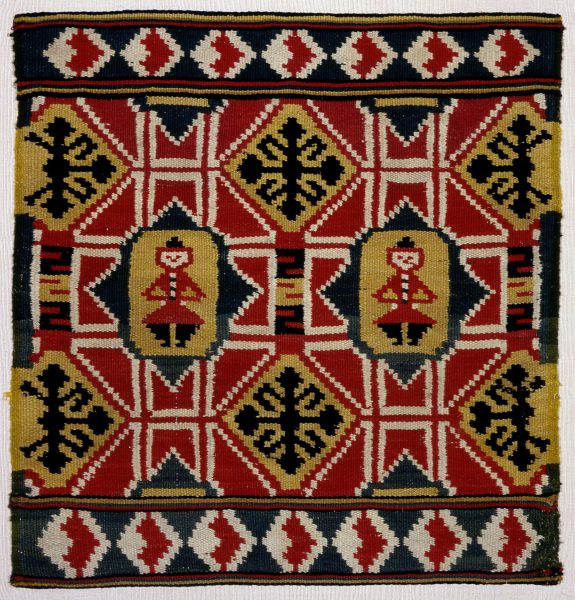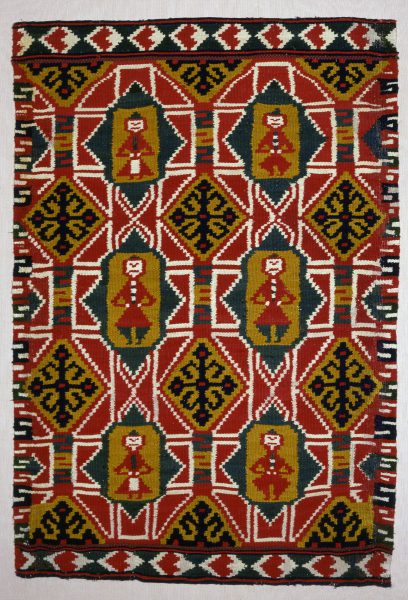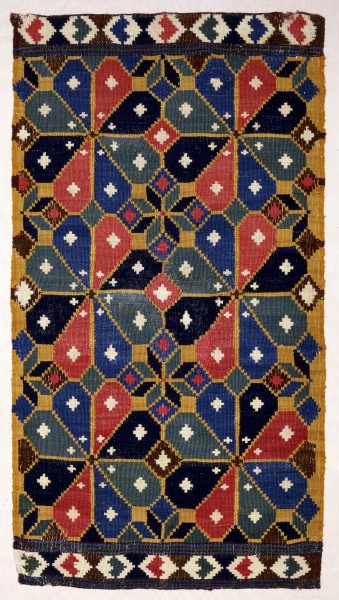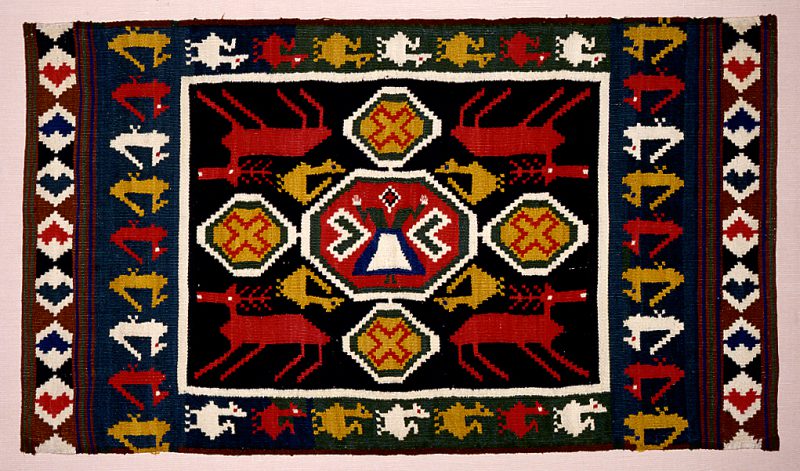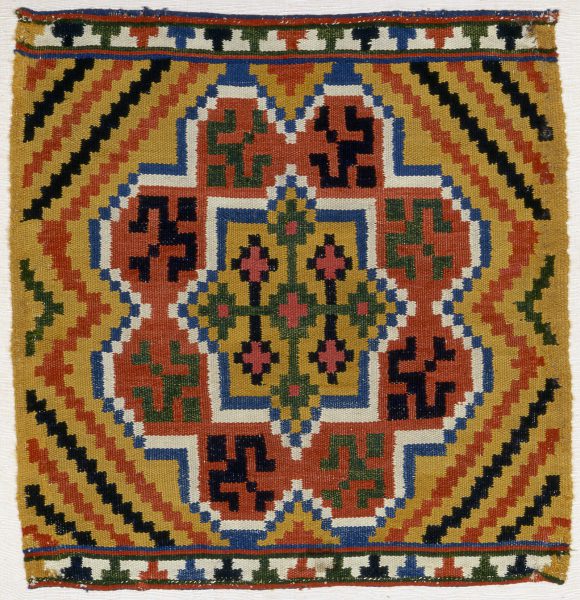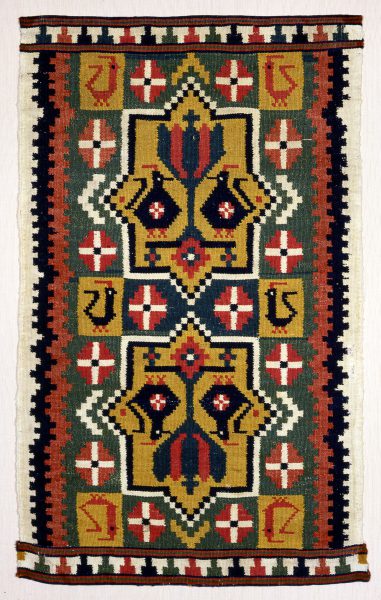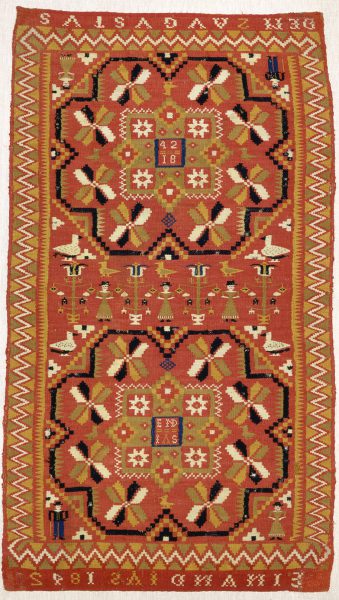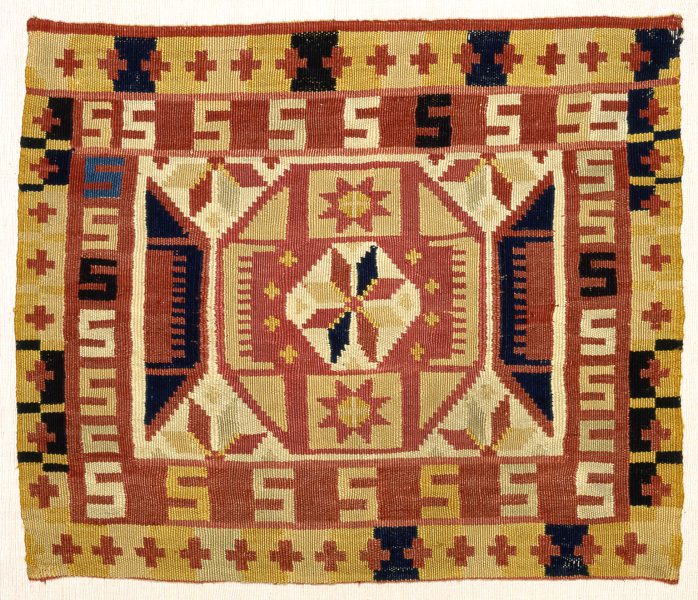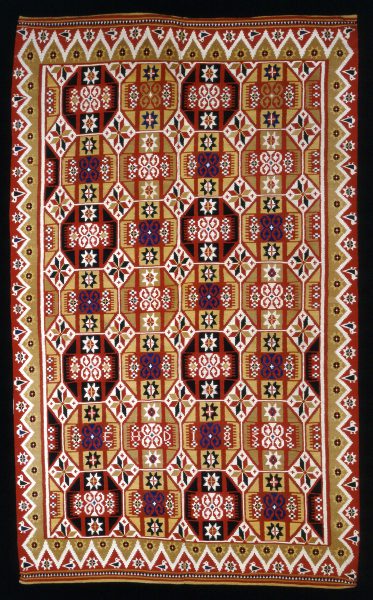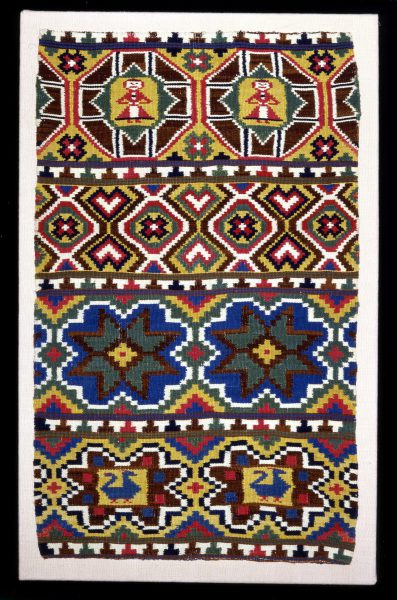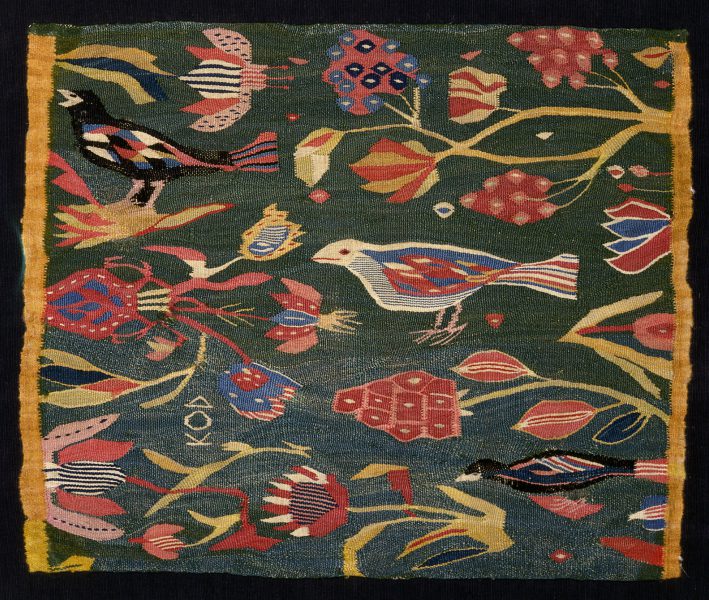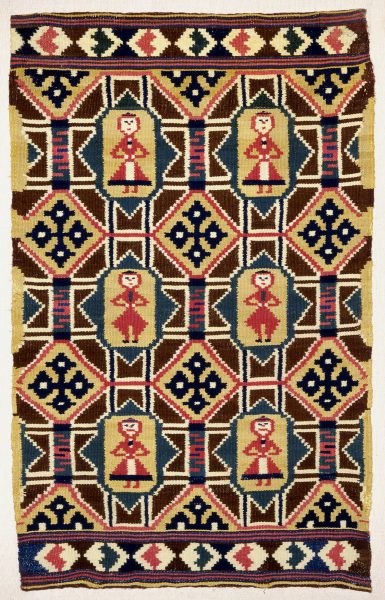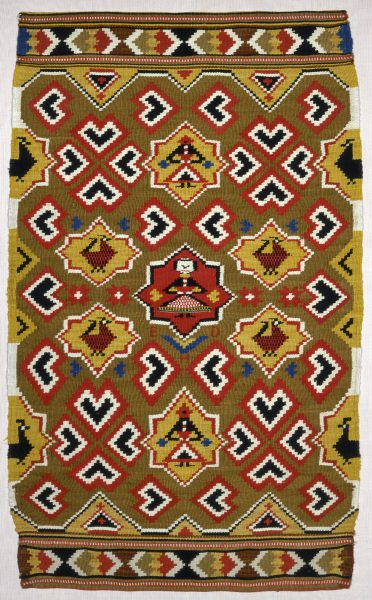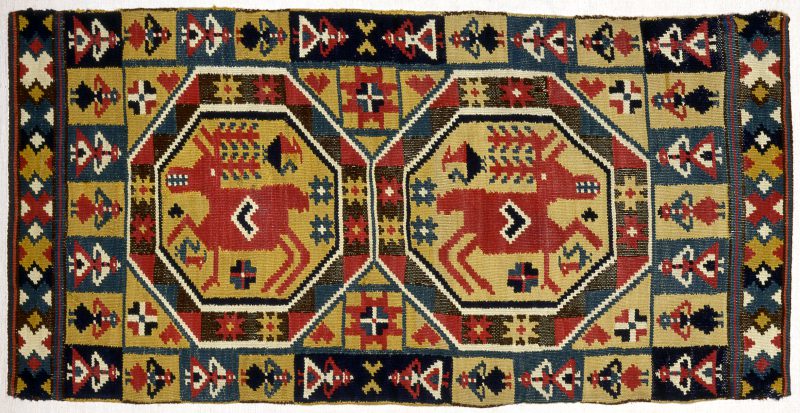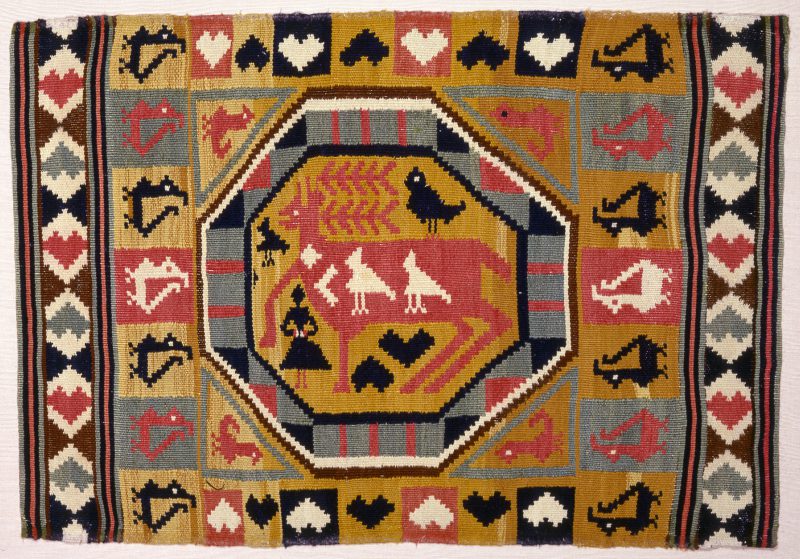


For almost 100 years from the middle of the 18th century, a little-known and very beautiful art flourished in Scania, the southernmost region of Sweden. This was expressed in small textile panels that were mostly made for wedding ceremonies.
Sir David’s interest in Swedish textiles was initially aroused by their striking patterns and artistic appeal, with which similarities can be found in Roman, Byzantine and Asian art. This is hardly surprising, as patterned textiles passed along the ancient Silk Road in both directions for more than 2,000 years, designs were copied, and Sweden had traded with the Mediterranean countries during much of this period.
Numerous peoples have expressed their art and culture through the medium of textiles. There are many sorts of textiles, from those made to be purely functional, such as everyday clothing, to those made for festivities and other special occasions, in particular as part of a dowry. While the latter were functional in that they were an essential part of the wedding ceremony, they were also made in order to demonstrate the artistry and skill of the weaver. Their designs were often symbolic of fertility and long life, and a sense of hope and joy can clearly be seen in the objects themselves.
The artists were invariably women working at home. Patterned textiles such as these fine examples from southern Sweden have tended to be classified as folk art, a loose term given to objects that do not naturally fall into the more established categories of fine and decorative art. In the West, we tend to treat the art of foreign cultures, as we do those works created in media other than painting and sculpture, at best with polite respect, but always with caution, due in part to ignorance of the cultures and traditions of the creators.
The colours and the appeal of the designs remain as fresh and vibrant today as when these beautiful weavings were created during the high period of the art, over 150 years ago. Each textile is a work of art in its own right. The extraordinary patterns are not only of interest to collectors, connoisseurs and contemporary weavers, but also represent a comprehensive design source.
Dror Elkvity Curator and Chief Co-ordinator
Viveka Hansen Special Advisor
Filter by:
